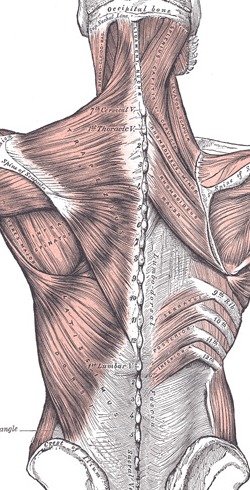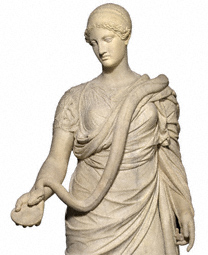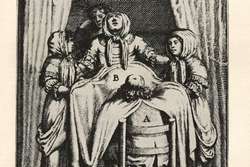
Medical Terminology Daily (MTD) is a blog sponsored by Clinical Anatomy Associates, Inc. as a service to the medical community. We post anatomical, medical or surgical terms, their meaning and usage, as well as biographical notes on anatomists, surgeons, and researchers through the ages. Be warned that some of the images used depict human anatomical specimens.
You are welcome to submit questions and suggestions using our "Contact Us" form. The information on this blog follows the terms on our "Privacy and Security Statement" and cannot be construed as medical guidance or instructions for treatment.
We have 2281 guests online

Georg Eduard Von Rindfleisch
(1836 – 1908)
German pathologist and histologist of Bavarian nobility ancestry. Rindfleisch studied medicine in Würzburg, Berlin, and Heidelberg, earning his MD in 1859 with the thesis “De Vasorum Genesi” (on the generation of vessels) under the tutelage of Rudolf Virchow (1821 - 1902). He then continued as a assistant to Virchow in a newly founded institute in Berlin. He then moved to Breslau in 1861 as an assistant to Rudolf Heidenhain (1834–1897), becoming a professor of pathological anatomy. In 1865 he became full professor in Bonn and in 1874 in Würzburg, where a new pathological institute was built according to his design (completed in 1878), where he worked until his retirement in 1906.
He was the first to describe the inflammatory background of multiple sclerosis in 1863, when he noted that demyelinated lesions have in their center small vessels that are surrounded by a leukocyte inflammatory infiltrate.
After extensive investigations, he suspected an infectious origin of tuberculosis - even before Robert Koch's detection of the tuberculosis bacillus in 1892. Rindfleisch 's special achievement is the description of the morphologically conspicuous macrophages in typhoid inflammation. His distinction between myocardial infarction and myocarditis in 1890 is also of lasting importance.
Associated eponyms
"Rindfleisch's folds": Usually a single semilunar fold of the serous surface of the pericardium around the origin of the aorta. Also known as the plica semilunaris aortæ.
"Rindfleisch's cells": Historical (and obsolete) name for eosinophilic leukocytes.
Personal note: G. Rindfleisch’s book “Traité D' Histologie Pathologique” 2nd edition (1873) is now part of my library. This book was translated from German to French by Dr. Frédéric Gross (1844-1927) , Associate Professor of the Medicine Faculty in Nancy, France. The book is dedicated to Dr. Theodore Billroth (1829-1894), an important surgeon whose pioneering work on subtotal gastrectomies paved the way for today’s robotic bariatric surgery. Dr. Miranda.
Sources:
1. "Stedmans Medical Eponyms" Forbis, P.; Bartolucci, SL; 1998 Williams and Wilkins
2. "Rindfleisch, Georg Eduard von (bayerischer Adel?)" Deutsche Biographie
3. "The pathology of multiple sclerosis and its evolution" Lassmann H. (1999) Philos Trans R Soc Lond B Biol Sci. 354 (1390): 1635–40.
4. “Traité D' Histologie Pathologique” G.E.
Rindfleisch 2nd Ed (1873) Ballieres et Fils. Paris, Translated by F Gross
"Clinical Anatomy Associates, Inc., and the contributors of "Medical Terminology Daily" wish to thank all individuals who donate their bodies and tissues for the advancement of education and research”.
Click here for more information
- Details

Posterior view of the superficial and
intermediate muscle layers of the back
The [trapezius] is a bilateral muscle belonging to the superficial muscles of the back. On each side it is a flat, thin triangular muscle that spans the neck, shoulders and the superior and middle aspect of the back. When seen together these two triangular muscles form a diamond-shaped quadrangle from which its name derives. The word originates in the Greek [τραπεζι] meaning "a four-legged table" (four sides). This word later evolved into the New Latin [trapezium].
In the midline the trapezius muscle attaches to the inion (external occipital protuberance), the ligamentum nuch?, the spinous processes of the seventh cervical vertebra (vertebra prominens), and the spinous processes of all the thoracic vertebr?.
The trapezius’ muscle fibers have three orientations. From the midline the superior fibers course inferolaterally to attach to the posterior border of the lateral third of the clavicle. The middle fibers course laterally to attach to the medial margin of the acromion, and posterior border of the spine of the scapula. The inferior fibers course superolaterally to attach to the spine of the scapula by way of an aponeurosis.
Because of their attachments, the superior and inferior fibers of the trapezius act coordinatedly to rotate the scapula, while the middle fibers act to retract the scapula. The superior fibers also act to slightly elevate the scapula. The trapezius muscle is sometimes described as an accessory respiratory muscle.
The trapezius muscle receives muscular innervation by way of the spinal accessory nerve (11th Cranial Nerve) which courses on the deep aspect of the muscle along with the superficial branch of the transverse cervical artery and vein. The muscle also receives sensory innervation by way of nerves arising from the ventral rami of the 3rd and 4th spinal nerves.
The trapezius is one of the 17 muscles that attach to the scapula.
Sources:
1 "Tratado de Anatomia Humana" Testut et Latarjet 8 Ed. 1931 Salvat Editores, Spain
2. "Anatomy of the Human Body" Henry Gray 1918. Philadelphia: Lea & Febiger
Original images courtesy of bartleby.com
- Details
The fourth ventricle is one of the components of the ventricular system of the brain. It is a rhomboidal-shaped cavity located between the pons of the brain stem anteriorly and the cerebellum posteriorly.
The fourth ventricle is the last of the components of the ventricular system of the brain. It receives cerebrospinal fluid (CSF) from the Acqueduct of Sylvius, adds CSF produced in the choroid plexuses located in the roof of the fourth ventricle, and allows passageway of CSF to the external aspect of the brain and the subarachnoid space by way of a posteroinferior midline opening called the "foramen of Magendie". There are two small and sometimes absent or non-functional lateral openings to the fourth ventricle which also connect with the subarachnoid space called the "foramina of Luschka". These foramina are found at the end of the lateral recesses of the ventricle.
The accompanying image shows a posterior view of the brain stem and the cerebellum which has been opened in the median plane to expose the 4th ventricle. Click on the image to see a larger version.
Image property of: CAA.Inc. Photography: E. Klein
- Details
The word [hygiene] is defined as the "science of the establishment and maintenance of health"(Merriam-Webster). Another definition is "conditions or practices conducive to maintaining health and preventing disease, especially through cleanliness".
In Greek mythology Hygeiea [Υγιείας] is the goddess of health, one of the daughters of Aesculapius, who is himself the god of Medicine. Aesculapius was represented as a figure leaning on a staff around which a serpent is coiled.
The Greek word [υγιής], a derivative from the name of the goddess Hygieia means "healthy", "sound" or "strong", and became the root for our modern word [hygiene]. Because of its mythological origin, there must be something to the saying "cleanliness is next to godliness".
The image of the statue of Hygieia acompanying this article is known as the "Hope Hygieia" and is on display at the J. Paul Getty Museum. The statue shows Aesculapius' snake, a symbol of renovation. This statue was discovered in 1797 at the port of Ostia in Rome. The statue was restored, de-restored, and re-restored. For more information of this statue's history CLICK HERE.
- Details
The term [cancer] is Latin and means "crab". The word was first used by Galen of Pergamon (129AD - 200AD) who used it to describe the crab-like appearence of the veins of a cancerous tumor, probably a breast cancer. Galen said "... as a crab's feet extend from every part of its body, so in this disease are the veins distended, forming a similar figure". The term cancer is also used in other applications, such as astronomy (Tropic of Cancer) and astrology, as in the zodiacal sign of Cancer.
The Latin term [cancer] was probably pronounced "kanker" and this may be the origin of the term [canker] to refer to ulcerations around the mouth or angles of the mouth, canker sores. This is also probably the origin of the term [chancre] used for some dried-out sore wounds.
Greek terms merged into the New Latin, so the Greek terms derived from [karkinos] also made it into modern medical terminology.
The word [cancer] is used today to denote a malignant tumor. There are variations of the term using the root term [-carcin-] as in [carcinoma].
The accompanying image is that of a colon specimen with a cancerous tumor. If you click on the image a larger depiction of a cancer of the breast will appear. WARNING: This secondary image could be disturbing to some of our readers.
Sources
1. “A Dictionary of Medical Derivations" Casselman W. Parthenon Publishing, 1997
2. "The origin of Medical Terms: Skinner, 1970
3. "Cancer - Wikipedia"
Images in the public domain, courtesy of Wikipedia
Personal note: This article is published in memory of my cousin Hugo Barahona who passed away on January 1st 2014 with a cancerous pathology. May he rest in peace. Dr. Miranda
- Details
The term [obstetrics] arises from the Latin word [obstare] which means "to stand close to" or "to stand in front of". Since a midwife "stands" in front of the patient for child delivery, the word was used in its feminine singular form [obstetrix]. The Latin plural is [obstetrices]; The evolution of the term into modern "obstetrics" is quite clear.
Through the ages the term used for someone who helps deliver a child has changed. Andreas Vesalius used the term [obstetrices nutrices] meaning "nurse midwife". The term "midwife" was used for a long time, being replaced today for the word "obstetrics" and "obstetrician".
Although all female reproductive system care was originally the domain of midwives, through time two distinct specialties have evolved. Gynecology refers to the medical specialty that studies and treats the female reproductive system. Obstetrics, deals with the care of the pregnant patient and delivery of the fetus. Male-widwives in Europe were allowed access to the patient only with the use of a "modesty blanket". This is plate XV from the 1681 book "Korte en Bondige Van Der Voortteeling en Kinderbaren" by Samuel Janson.
As an interesting side note in history, the first male physician to attempt to work as a man-midwife was Dr. Wertt from Hamburg. Dr Wertt decided to disguise himself as a woman to attend patients. When he was discovered, the punishment was "swift and salutary": He was burned at the stake.
Word suggested and edited by: Dr. Sanford S. Osher , MTD Contributor- Details
This article is part of the series "A Moment in History" where we honor those who have contributed to the growth of medical knowledge in the areas of anatomy, medicine, surgery, and medical research.

Avicenna
Avicenna (980 AD – 1037 AD) Persian physician, philosopher, mathematician, naturalist, geologist, musical theorist, astronomer and poet. Ab? Al? al-Hysayn ibn-‘Abd-All?h ibn-S?na, also known as “ibn-S?na“ and as “Avicenna” was born in Afshaneh, near the city of Bokhara (in old Persia, what today is Iran) in 980AD.
Intellectually gifted, Avicenna studied philosophy and the Islam religion, with early studies in medicine. By age 18 he was already a famous physician. With access to the royal library Avicenna continued his studies and traveled through what today is Iran. Avicenna had government positions, becoming prime minister. Jailed for political reasons Avicenna wrote a large number of his medical, philosophical, and astronomical publications while in jail.
Of over 450 total medical books attributed to Avicenna, his most famous publication was the “al-Qanun-fi-al-Tibb” or the “Canon of Medicine”, consisting of five books on principles of medicine, diseases, drugs, and compound medicines. The Canon was translated into Latin and later into other languages, remaining an important book for at least until the 16th century.
He used the term “vermis” and spoke of the “tailed nucleus”, known to us as the “caudate nucleus”. Avicenna died in 1037AD at 57 years of age. He was buried in the city of Hamadh?n, where his tomb still exists. Avicenna has been called the “prince of physicians”.
Sources
1. “Avicenna” Koontz AR JAMA. 1962;179(1):99
2. "Honoring Avicenna, the Great Persian Physician on the World's Postage Stamps". Afshar, A. Arch Iranian Med (1029-2977), 13 (5), 447
3. "Avicenna and the Canon of Medicine: A millennial tribute" West J Med 133:367-370, Oct 1980
4. “Avicenna (980–1037 AD) Zargaran, A, et al. J Neurol (2012) 259:389–390 5. “Avicenna” JAMA 177:704 (1961)
Original image courtesy of NLM





